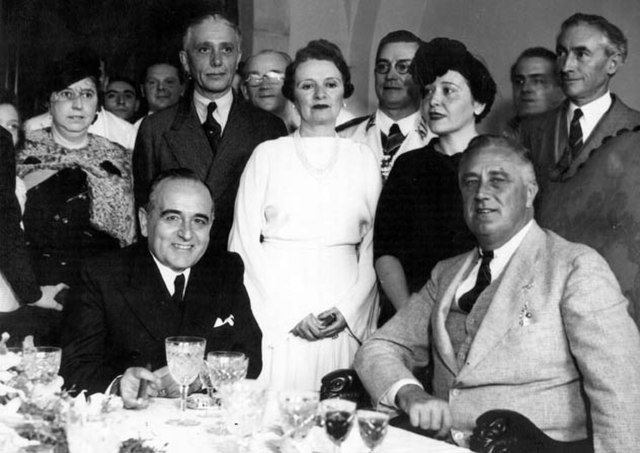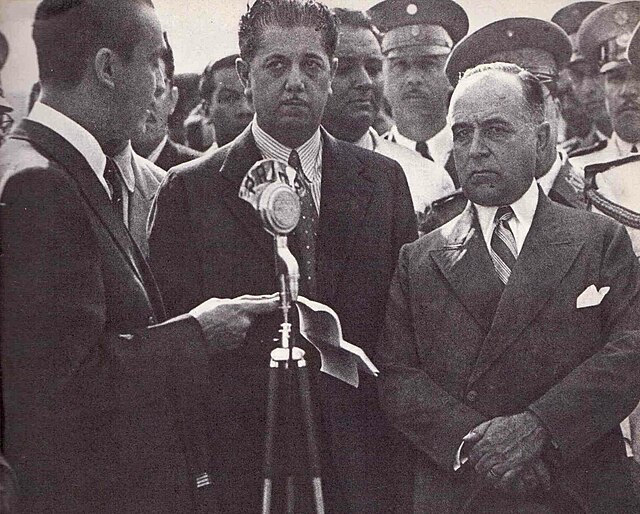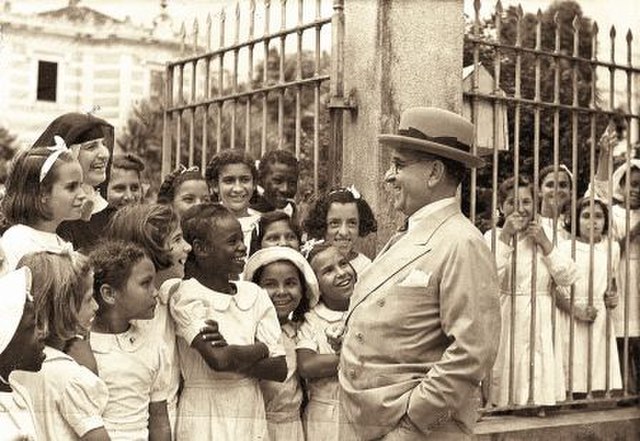The Cohen Plan was a document forged by the Brazilian military with the aim of establishing the Estado Novo dictatorship in November 1937. A conjunction between antisemitism and anti-communism in Brazilian politics, it was fraudulently attributed to the Communist International, which allegedly planned to overthrow the government through strikes, the burning of public buildings and popular demonstrations that would end in looting, chaos, and the murder of authorities. To introduce the fraud, it was "discovered" by the Armed Forces, immediately used to label the political opposition as communists, and then to legitimize the military coup d'état.
Getúlio Vargas and other leaders of the 1930 Revolution
General Eurico Gaspar Dutra was one of the architects of the conspiracy involving the Cohen Plan.
General Pedro Aurélio de Góis Monteiro, one of the conspirators behind the Cohen Plan, was the first one to confirm it was false.
The Estado Novo, or Third Brazilian Republic, began on 10 November 1937, and consolidated Getúlio Vargas' power. Vargas had assumed leadership of Brazil following the 1930 revolution that ended the First Republic. The Estado Novo ended politically on 29 October 1945, and officially on 31 January 1946. It was characterized by Brazilian nationalism, centralized power, anti-communism and authoritarianism.
Getúlio Vargas and Franklin Roosevelt meeting in Rio de Janeiro in 1936.
Vargas on 12 May 1940 at the inauguration of Avenida do Contorno with Benedito Valadares, governor of Minas Gerais, and then-mayor of Belo Horizonte Juscelino Kubitschek
Vargas visiting Porto Velho in 1940
The inauguration of Goiânia in 1942 was the start of a "march to the west" that culminated with the construction of Brasília many years later.







